Spatial
George Culling, Oliver Prisk, Henry Mabin, Andre Vachias Yellow Post
-
Ngā Kaimahi / Team Members
George Culling, Oliver Prisk, Henry Mabin, Andre Vachias -
Kaitautoko / Contributors
Elliot Western, Cheshire Architects, Structure Design, Cassidy Construction, Unitec -
Client
Brick Bay Wines & Sculpture Trail
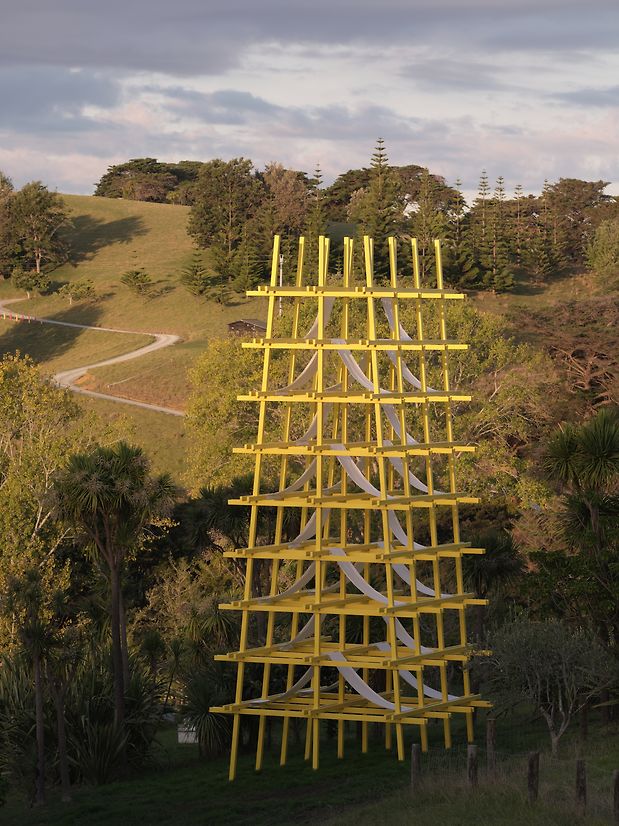
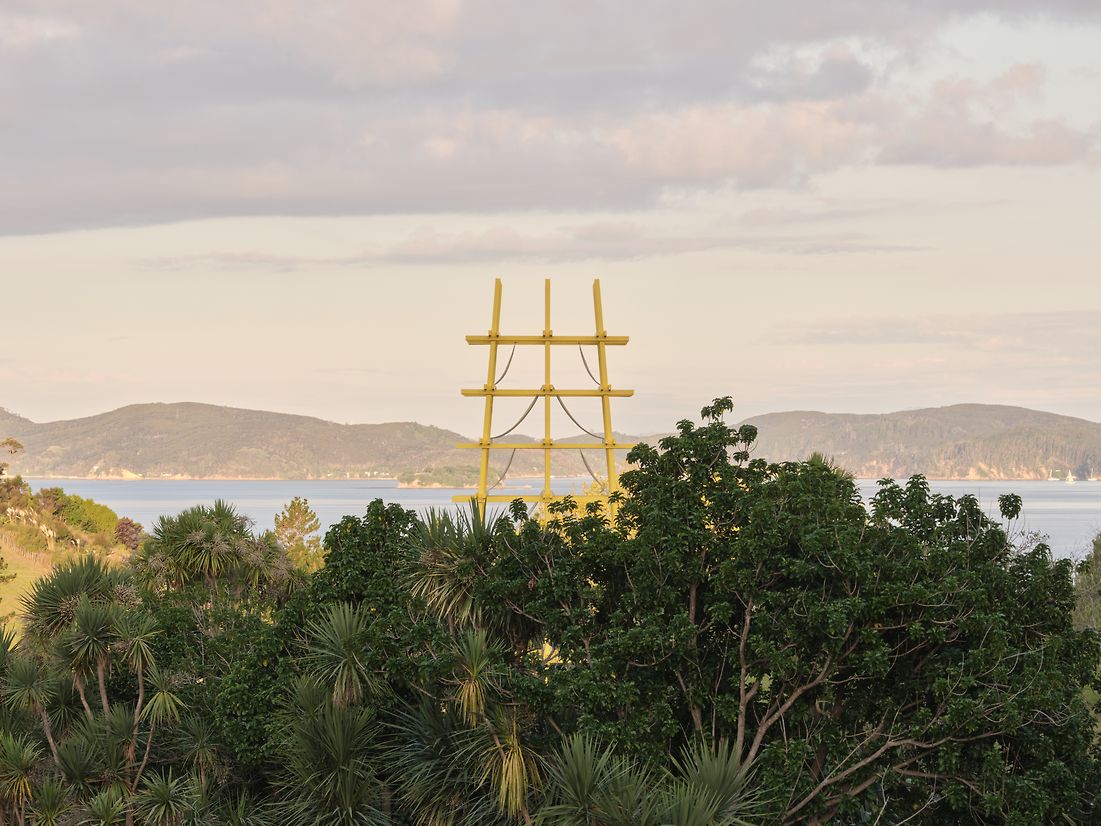
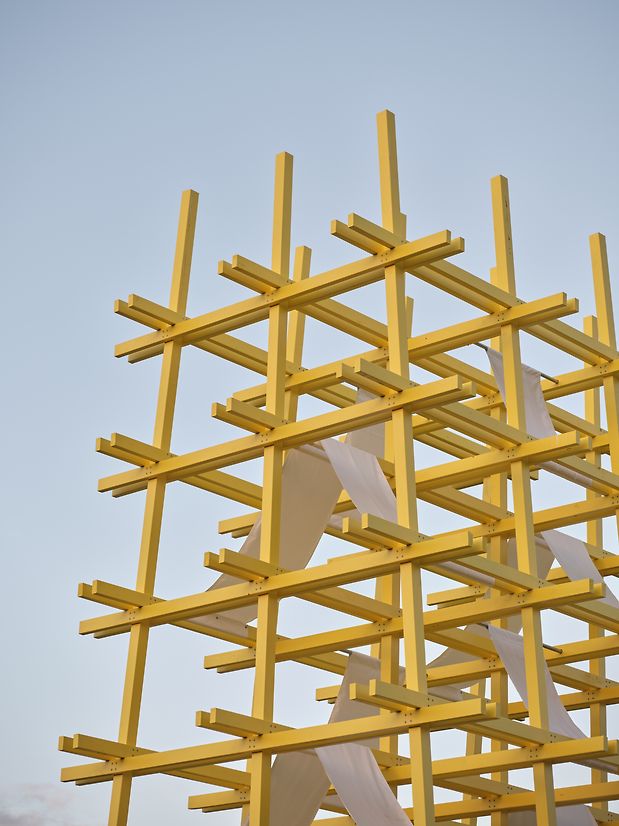
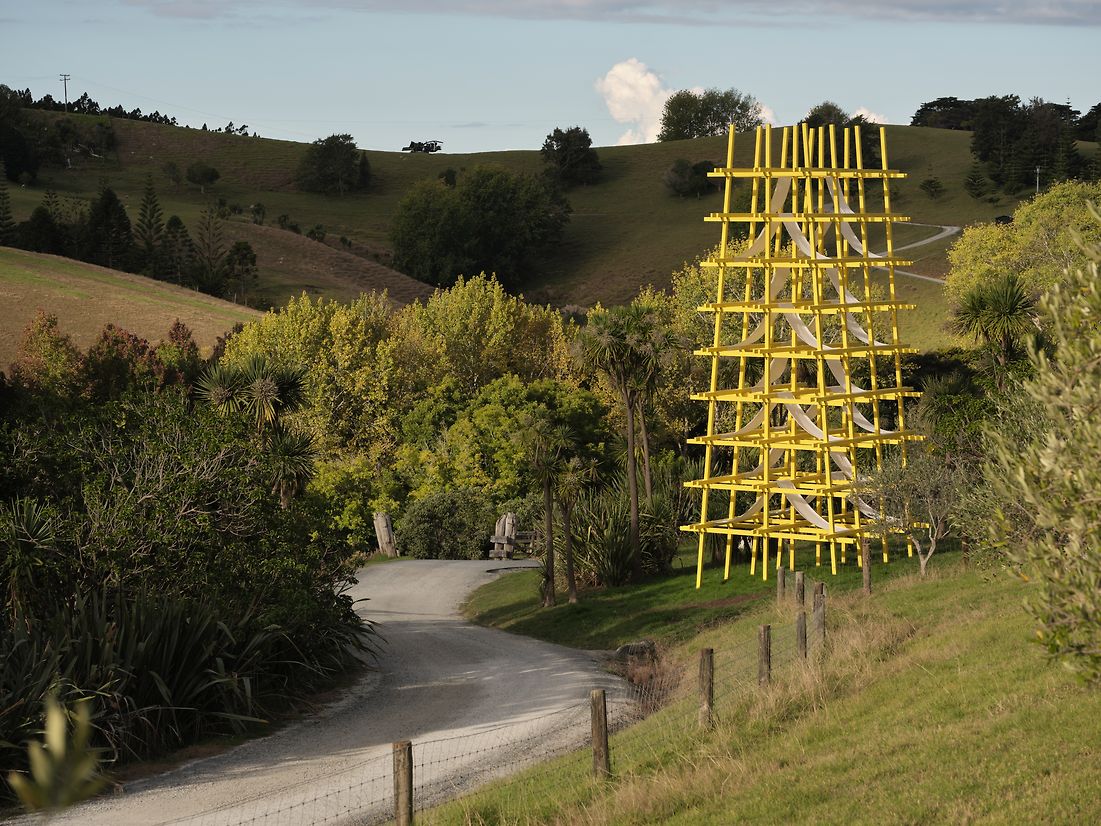
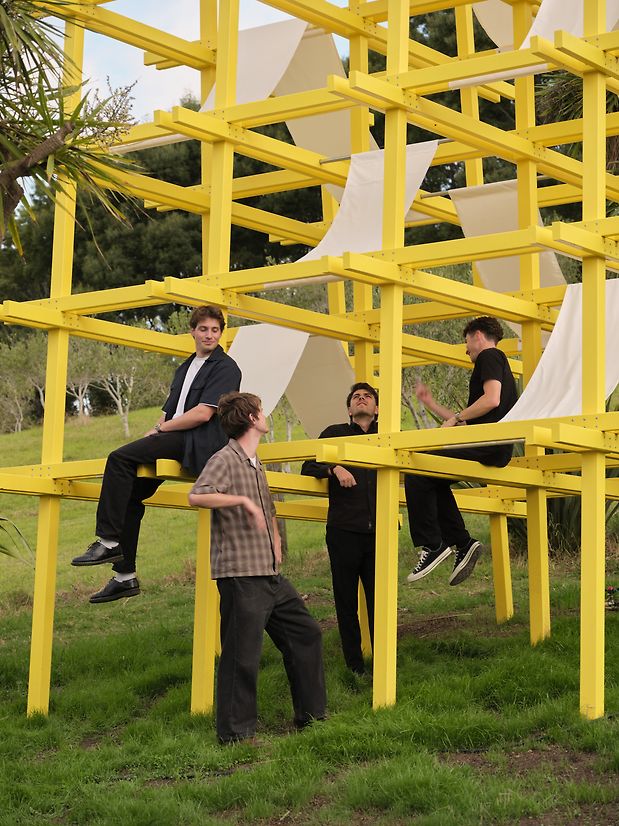
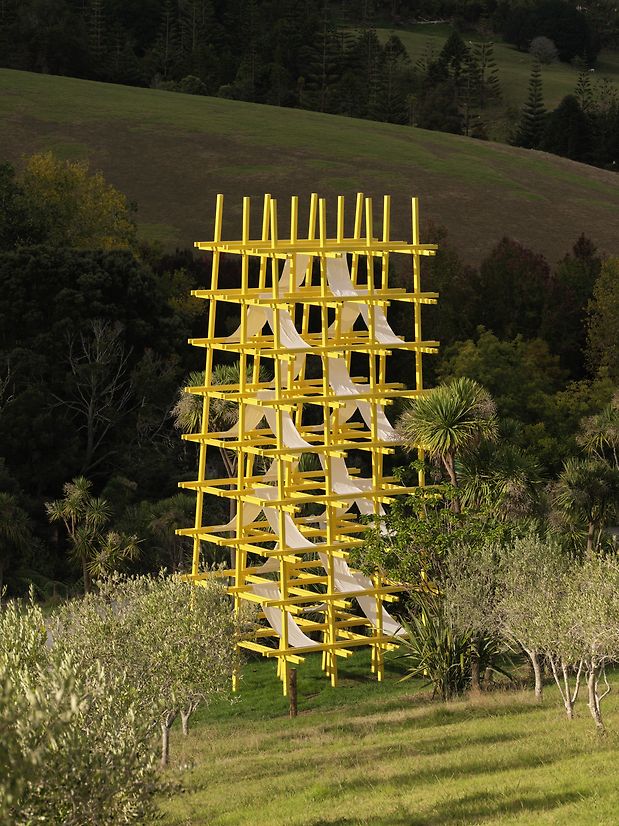
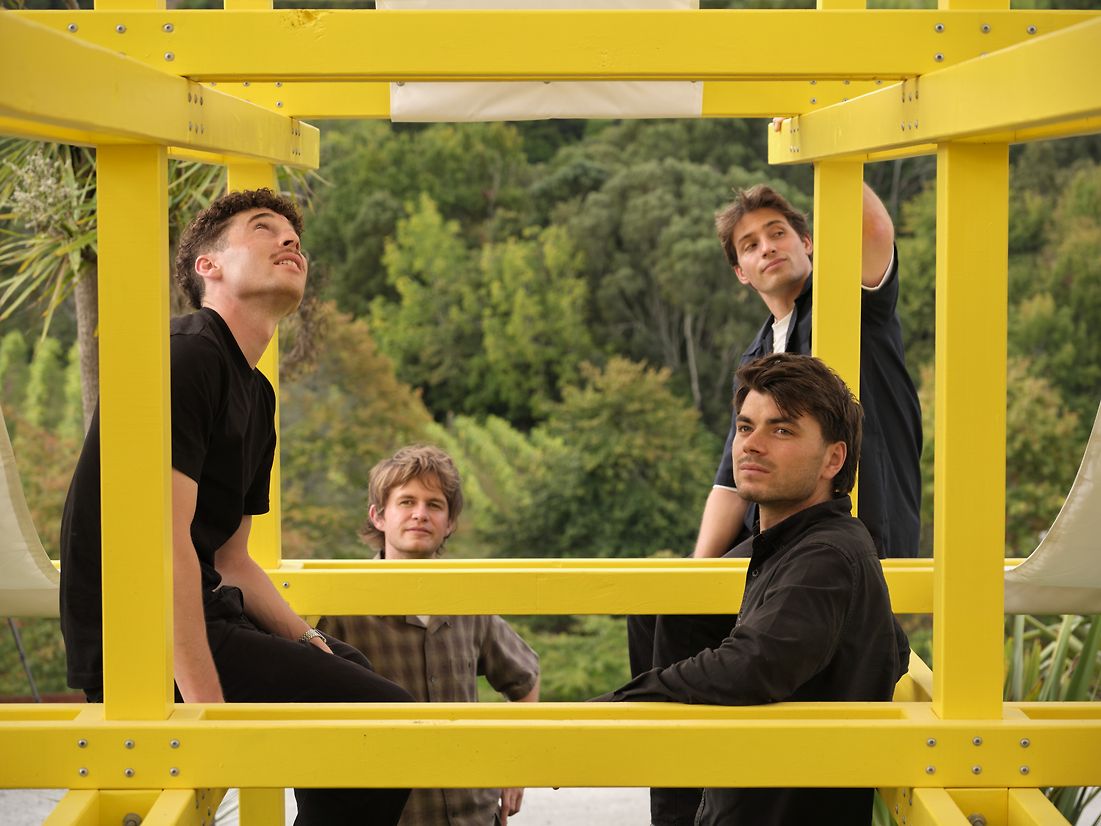
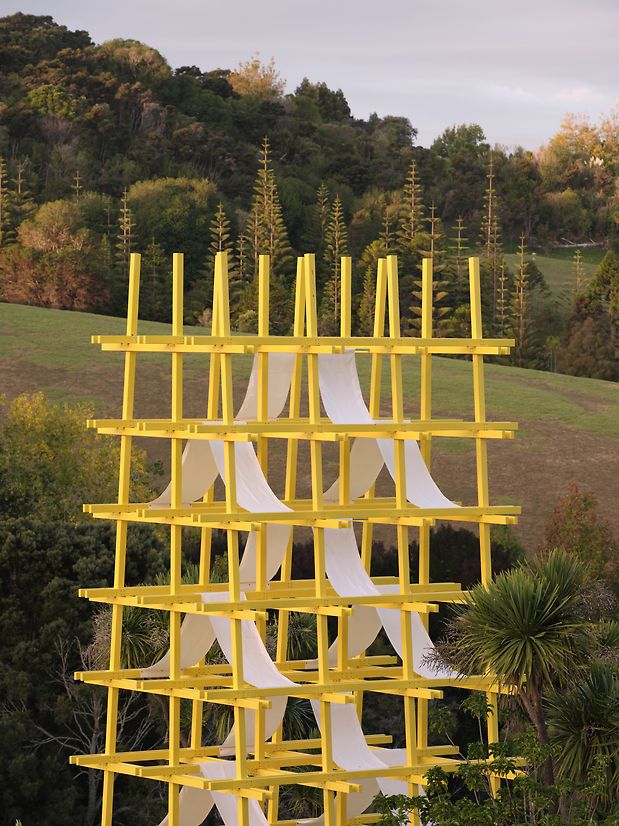
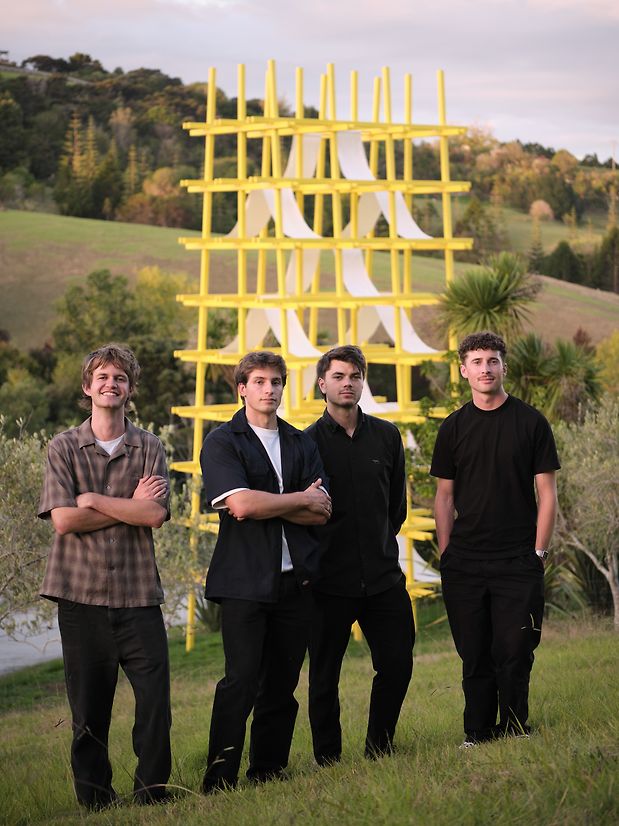
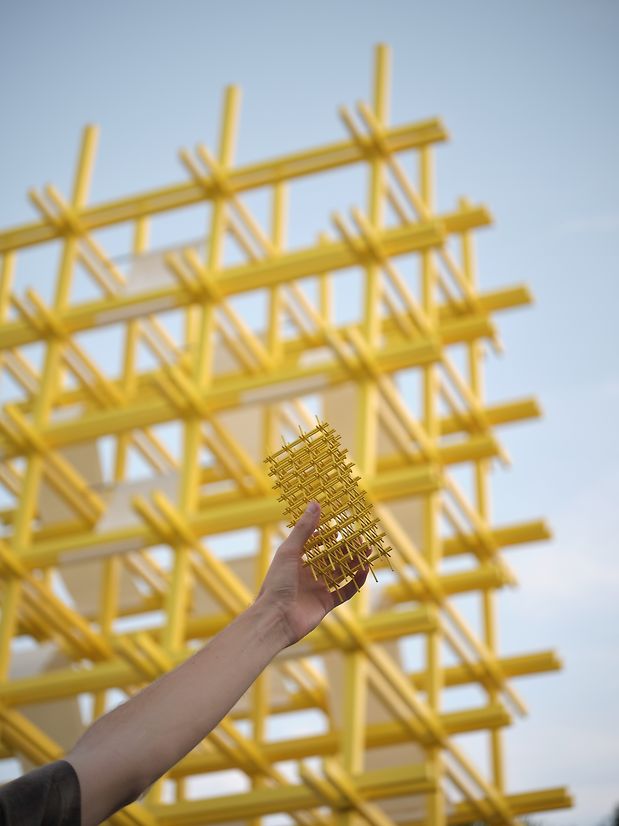
Description:
Yellow Post is the winner of the 10th annual Brick Bay Folly Competition, 2025. Towering at 11-meters tall, Yellow Post is a prominent beacon, signalling the arrival and departure of visitors to Brick Bay. Gently resting on the sloped site beside the main driveway, the project gradually reveals itself through fleeting, partially obscured glimpses, framed by the forested sculpture park to the north and the shimmering Hauraki Gulf to the east.
The project takes inspiration from reminiscent chats of university lectures gone-by, where the team were introduced to the historic hākari structures of northern Aotearoa. Erected in the mid-19th century, these towering, scaffold-like forms, some reaching 30 metres high, served as places of manaakitanga; ceremonial markers in the landscape where iwi tribes would gather for a number of events including the resolution of conflict, tangi, naming of children and reciprocation of previous hospitality. Importantly, it embodied the ritual of congregation and celebration.
Constructed from native hardwoods such as Kauri and Pūriri, the scaffold-like form of the hākari was, by definition, temporary—designed to be dismantled just days after the ceremonial gathering. This impermanence resonates with the ethos of the Folly Competition, where each project is conceived with a defined life span. In this case, Yellow Post will stand for just three years before careful disassembly, echoing the transient nature of its historical inspiration.
The structure is a myriad of yellow beams forming a union of 108 intersectional nodes. 24 Fabric sheets hang within the structure creating a clever maze of mass, light and shadow. The layering of yellow timber, interrupted by white fabric sheets, creates a rhythm of form, depth, and shadow that gently contrasts with the surrounding landscape. The use of colour, specifically the bold, saturated yellow was a deliberate decision, both symbolic and pragmatic. As a chromatic beacon, it amplifies the tower’s presence within landscape green and blue hues, marking it unmistakably as a point of arrival.
The design approach centred on circular design thinking and responsible material use. All 108 timber intersections can be taken apart using standard fixings, allowing materials to be reused without damage. To further reduce environmental impact, a screw pile foundation system was used to minimise disturbance to the ground, avoiding the need for concrete piles and allowing the land to return to its natural state after the exhibition. Selecting durable materials and fixings that enable easy disassembly reflects the project's broader commitment to responsible construction and long-term thinking.
Yellow Post stands as both threshold and tribute, an ephemeral marker of welcome, memory, and gathering. Rooted in the past, visible in the present, and destined to vanish, it invites us to pause, look up, and step gently into place.
Judge's comments:
Big, bold, brave and playful. Expertly resolved project from the young design professionals. You have made your mark.